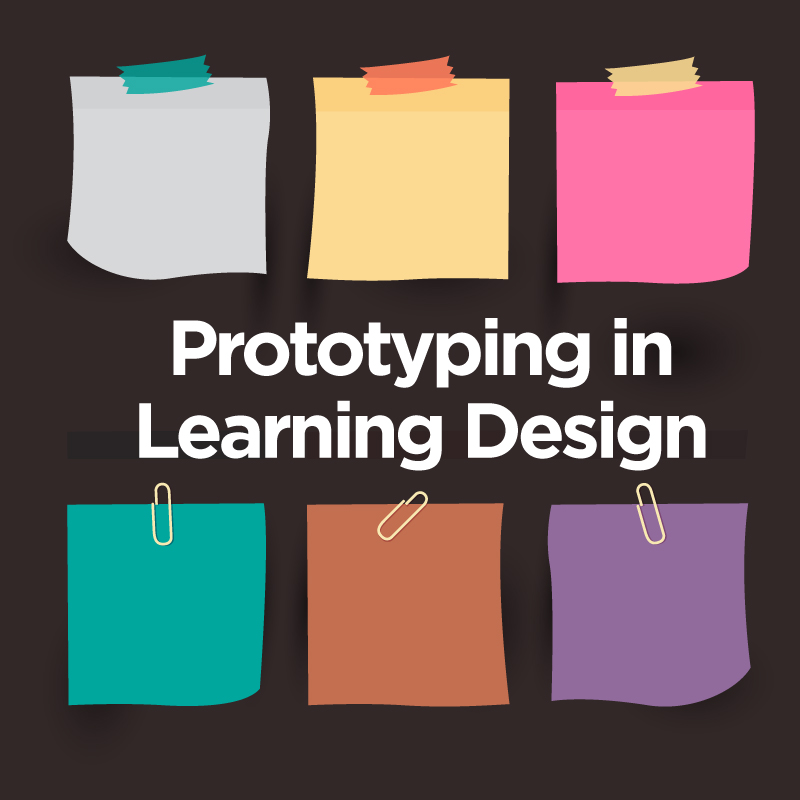The following is a Part 2 of a two-part blog post on prototyping used for learning design. In Prototyping Part 1, I introduced what prototyping is and how I’ve used it as an instructional designer. Here in Part 2, I highlight some ways to build and share your prototype.
Mindset: Build to think
Disposition: Must be curious, creative, and willing to learn
How to build a prototype
Here are a three basic “remixed” steps on building a prototype within Learning Design (from IDEO U):
- Build: Get tangible quickly. Get messy and rough. Get physical. Tell a story to the world with your prototype.
- Share: Don’t try to sell your idea, and do your best not to defend it. Welcome feedback from a future learner, a librarian, a community member who could be impacted by your course content, a trusted colleague whose ideas and area of study can add value to your course, and last but not least a learning designer. We are here to serve with innovative design recommendations.
- Reflect: Listen carefully to what others have to say, and think about how you might respond with your next prototype (iterative design). Sometimes it’s all about reading in between the lines. Pay attention to body language.
It takes several iterations of course design to gain results in producing an optimal learning experience.
Best Practice: It takes three to four iterations (Design, Review, Implement, Receive Feedback, Improve) to create a quality course design.
How to share a prototype
Consider your audience
- Who are you sharing your prototype with? What are their needs and how might those needs change after engaging with your prototype?
- If you teach in an interdisciplinary department and program it’s always good to share to make a streamlined experience for the learners.
Ways to share
- You might tell a story, act out a skit, develop a PSA, or create a playful presentation for your prototype. Do whatever works to help gather feedback.
What not to do
- Don’t try to oversell your idea, and don’t defend it. Just tell the story of the purpose of the idea or learning experience and what it’s helping to solve.
What to do
- Listen actively and welcome constructive criticism. Pay attention to body language—it’s sometimes more important than what people are actually saying. LISTEN. LISTEN. LISTEN. OBSERVE.
Remember: If you desire to build great things, prototyping your ideas is an answer!
Learn more
If you want to learn more about prototyping, request an instructional design consultation to schedule an appointment with Keesa V. Johnson, johns253@msu.edu. We can discuss what works for you!



